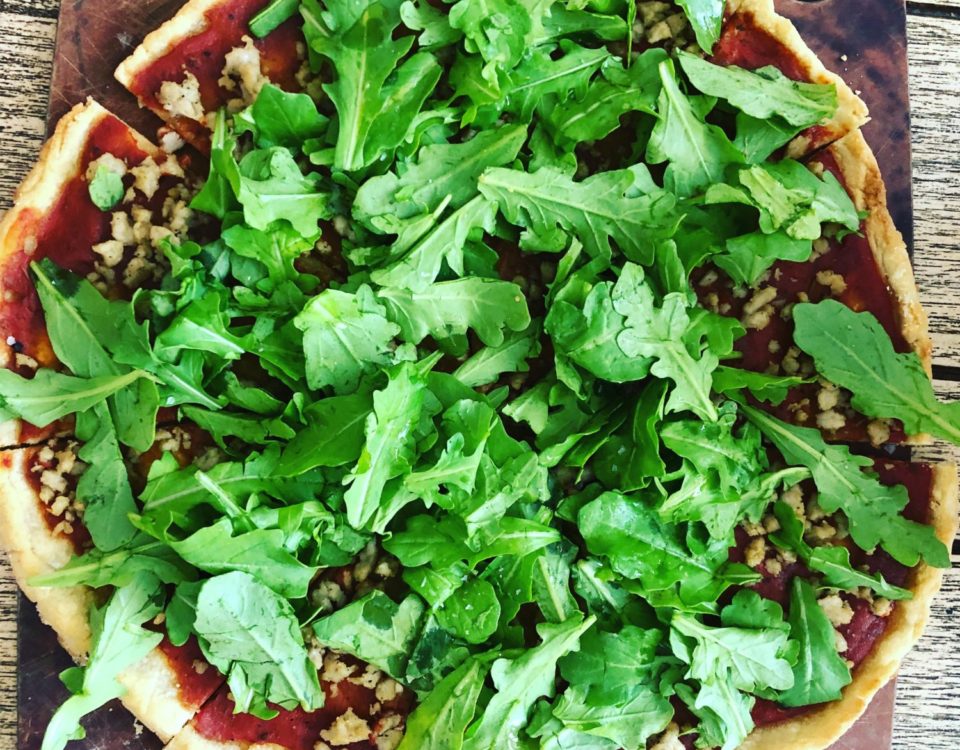THE ART OF PERSONALIZED NUTRITION

Once you’ve made the decision to start eating healthier, it shouldn’t be THAT tough to figure out how to get going – right? But our relationship with food has become so complicated that it seems hard to figure it all out. We’re constantly told that eating healthier is important. But at the same time, we’re bombarded with social cues urging us toward the most un-healthy stuff that we’ve come to love – sweet, salty, crunchy, creamy snacks; heavily-advertised fast food or casual restaurants; packaged treats; convenient take-out or delivery meals. The siren call of these foods, carefully photographed to look appealing, seems irresistible. It’s enough to make us think that eating healthy is just too hard.
Even if we do decide to try to eat better, it’s confusing. What does “clean eating” even mean? We get lots of conflicting advice from television, magazines, and especially from the armchair nutrition experts. Celebrities tout the “latest thing” in healthy eating. No carbs! Cleansing fasts! Coconut water! Acai berries! Chia seeds! Paleo! It’s enough to make your head spin – then order a pizza. One thing that all these fad diets have in common is that they reduce the concept of healthy eating to a single “magic pill.” Take this supplement, or eat these certain foods, and presto! Your life will change, you’ll lose weight, and you’ll never have to think about how you eat. If we’re really, really honest with ourselves, we know that there’s no such thing as a magic pill.
The simple truth that most of us miss in all this racket is: Eating healthy is personal. We each have unique genetics, nutritional needs, and challenges to overcome. Over the years, we’ve formed habits in the way we eat, often poor ones, and we can change those habits. You need to discover what foods are right for your body. For each of us, there is an optimal diet, depending on our current health and lifestyle choices. And there’s more to it: the best diet for us is dependent on our very genes. Our individual genetic blueprint determines how our bodies react to toxins, allergens and stress levels, and to foods in general. Without this epigenetic component, no generic diet will bring you to peak wellness.
If you’re trying to stay healthy, avoid getting sick, and live longer, this is key. But if you’re currently dealing with health issues, it’s even more important to understand this. Instead of merely treating the symptoms of your illness, it’s critical to determine the root cause. Inflammatory and allergenic foods, environmental toxins, vitamin and mineral deficiencies, lack of sleep, and stress can actually cause illness. So, identifying these particular triggers for you is PARAMOUNT!
So-called healthy foods may not be healthy for you. Most people don’t tolerate gluten well.(Psst… I don’t think anyone should be eating it regularly, if at all. My next blog post will be all about the dark side of gluten and certain grains). Even though beans and legumes are considered healthy, some people never get over feeling bloated and gassy when they eat them. The foods that may make one person feel energized may exacerbate another person’s autoimmune condition. Even though it seems easy to divide food into healthy and not-healthy, it’s really not that simple. You have to learn to listen to your body and determine what works for you.
Michael Pollan, noted food educator and activist, worked for years promoting healthier ways of eating. Finally, he distilled all his advice into three, short sentences: Eat food. Mostly plants. Not too much. I love this approach because you can easily fit it in to your personal eating plan.
Let’s take a closer look.
“Eat food” means food that your great-grandmother would recognize. Real, whole food, as unadulterated as possible. Minimal processing. That’s a huge concept these days.
So much of the food in today’s world is heavily processed. As you walk around the supermarket, just about everything in the middle of the store is processed foods. Even so-called healthy foods are laden with artificial ingredients and other scary stuff. Products that began as real food, but were then manufactured into something else, carefully created to have just the right balance of sugar and salt to make them addictive. And that’s what happens – we get used to, and addicted to, these artificially created “frankenfoods”.
So, what is “real food”? It’s simple. Vegetables and fruits. Natural protein, like grass-fed meats and poultry, wild-caught fish, legumes, and nuts and seeds. Whole, gluten-free grains, like quinoa and millet (that is, if your digestive system can tolerate them).
Let’s move on to the second piece of advice: Mostly plants. Plants are hands-down our best medicine! They are loaded with antioxidant, immune-boosting, and anti-inflammatory properties that are not only healing but can prevent disease in the first place.
______
Aviva Romm, one of my favorite go-to nutrition gurus, states, “approximately 80% of adult cancers, diabetes, and heart disease can be avoided if you eat a plant-rich diet beginning in childhood.”
______
There is such a variety of delicious, seasonal vegetables, so explore the produce section or visit your local farmers’ market and broaden your fruit and veggie horizons – you’ll find a world of flavors! Plants can be sources of protein, too – these include quinoa, beans, and lentils. Nuts and seeds provide protein and healthy fats, too.
And the last piece of advice is, “Not too much.” In today’s culture, we’re bombarded with the message that we should be eating all the time. Food is touted as entertainment, and the answer to all our emotional states. Bored? Have a snack! Stressed? Have a snack! Tired, frustrated, sad, angry? Have something to eat, and you’ll feel better! Learning to eat an amount that’s right for you is an important step in your personalized nutrition plan. First, you’ll want to understand what a normal portion size looks like. Over the years, portion sizes of everything in the US have grown enormously. Because processed food is cheap, restaurants and packaged food producers have convinced us that more is better. Recommended portion sizes might surprise you. For example, a portion size for protein is around the size of a deck of cards. I teach my clients what the proportions of a “proper plant-rich plate” should be: 2/3 plant foods, 1/3 animal protein with a side of healthy fat.
Another critical part of personalized nutrition is pay attention to HOW you eat. Eating mindfully means taking time to savor and chew your meal. Enjoy the flavors of your food, and make eating a pleasure. Eating can be a social or a solitary experience, but if you often eat while watching TV, or while working, you’re probably packing away a lot more than you think. I can’t stress enough how important it is to chew your food instead of chowing it down. Digestion actually begins in the mouth, so chewing well can help start the process of breaking down the food. It helps your body extract maximum nutrition from what you eat. Another benefit is that eating slowly keeps you from overeating, by allowing your mind and body to recognize when you are full.
One of the most important benefits of eating a plant-centered, anti-inflammatory diet, based on your personal needs, is that it helps your body fight off disease and stay strong and healthy. Just as a workout makes your muscles strong, eating healthy makes your body strong from the inside out. Your body’s immune system is directly affected by what you eat. Healthy eating promotes a strong microbiome, or “gut health.” What’s that? It means a digestive system teeming with helpful microbes that fight off infections, and anti-inflammatory agents that keep you well. Unfortunately, a diet of fast and processed foods, without enough fiber, vitamins and probiotics, and high in added sugar and salt, means a gut without these silent health helpers. Sadly, that’s why those who eat this way get sick more often.
So, now that you know what personalized nutrition is all about, how can you get started on an individualized program that will help you identify and eliminate the root cause of your health issue(s), replenish important nutrients with the right food and targeted supplementation, and put your health back in your hands?
Glad you asked….
I work personally with my clients, helping them learn the skills they need to transform their lives. I teach them how to make better choices, how to determine what their “healthy” foods are, and how to sustain these lifestyle changes. What’s more, they learn how to change the way they think about food, eating, and living healthy. My ultimate goal is to help them create healthier habits, adopt better ways of dealing with stress and emotions, and have balance in their lives. As a result, they feel better, inside and out. I offer custom nutrition packages tailored to your individual needs. To learn more about each package or to set up a 15-MInute Introductory Phone Consult, visit my SERVICES page.



